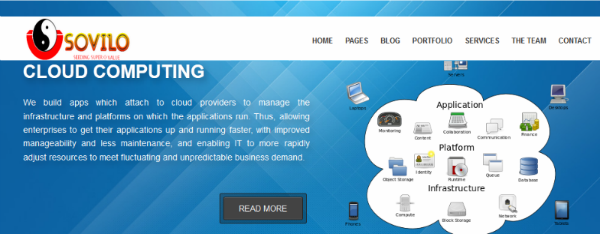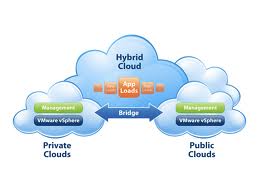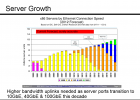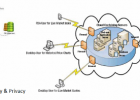The technology sphere is gearing towards more and more dynamism. New generation computing like server/application virtualization, application acceleration, high performance computing, subscription-based or green computing and cloud computing are impacting project and business decisions like never before. Let us talk about cloud computing for now.
Cloud Computing is a technology that uses the internet and central remote servers to maintain data and applications. Cloud computing allows consumers and businesses to use applications without installation and access their personal files at any computer with internet access. This technology allows for much more efficient computing by centralizing data storage, processing and bandwidth.
A simple example of cloud computing is Yahoo email, Gmail, or Hotmail etc. All you need is just an internet connection and you can start sending emails. The server and email management software is all on the cloud ( internet) and is totally managed by the cloud service provider Yahoo , Google etc. The consumer gets to use the software alone and enjoy the benefits. The analogy is , 'If you need milk , would you buy a cow ?' All the users or consumers need is to get the benefits of using the software or hardware of the computer like sending emails etc. Just to get this benefit (milk) why should a consumer buy a (cow) software /hardware ?
Cloud computing is broken down into three segments: "application" "storage" and "connectivity." Each segment serves a different purpose and offers different products for businesses and individuals around the world. In June 2011, a study conducted by VersionOne found that 91% of senior IT professionals actually don't know what cloud computing is and two-thirds of senior finance professionals are clear by the concept,highlighting the young nature of the technology.
Cloud Computing Segments
- Cloud computing is a technology which uses internet and one remote server to maintain data and various applications. Cloud computing provides significant cost effective IT resources as cost on demand IT based on the actual usage of the customer. Due to rapid growth, many companies are unable to handle their IT requirement even after having an in-house datacenter. Cloud services helps to improve IT capabilities without investing large amounts in new datacenters. This technology helps companies with much more efficient computing by centralizing storage, memory, processing and bandwidth.
Applications
Storage
Connectivity
Cloud Computing Deployment Models and Concepts
Community Cloud
Community cloud shares infrastructure between several organizations from a specific community with common concerns , whether managed internally or by a third-party and hosted internally or externally. The costs are spread over fewer users than a public cloud (but more than that of a private) to realize its cost saving potential.
Public Cloud
A public cloud is established where several organizations have similar requirements and seek to share infrastructure so as to appliance. In addition, it can be economically attractive as the resources (storage, workstations) utilized and shared in the community are already exploited.
This is the cloud computing model where service providers make their computing resources available online for the public. It allows the users to access various important resources on cloud, such as:Software, Applications or Stored data. One of the prime benefits of using public cloud is that the users are emancipated from performing certain important tasks on their computing machines that they cannot get away with otherwise, these include: Installation of resources, their configuration; and Storage.
- Advantages of using Public Cloud
For obvious reasons, public cloud is bound to offer a multitude of benefits for its users, which can be sensed by its ubiquitous demand. Some of the most important ones are mentioned here:
- Efficient storage and computing services
- Inexpensive, since all the virtual resources whether application, hardware or data are covered by the the service provider.
- Allow for easy connectivity to servers and information sharing.
- Assures appropriate use of resources as the users are required to pay only for the services they require.
- Highly reliable and redundant.
- Widespread availability irrespective of geographical precincts.
- Sets the business people free from the hassles of buying, managing and maintaining all the virtual resources at their own end, the cloud server does it all.
- Public cloud, in today's advanced workplace, empowers employees and enable them to become productive even when outside the office. The SaaS model ensures that corporations save on IT expenditures while delivering the flexibility of productivity software on the cloud.
Private Cloud
Private cloud is cloud infrastructure operated solely for a single organization, whether managed internally or by a third-party and hosted internally or externally. Undertaking a private cloud project requires a significant level and degree of engagement to virtualize the business environment, and it will require the organization to reevaluate decisions about existing resources. When it is done right, it can have a positive impact on a business, but every one of the steps in the project raises security issues that must be addressed in order to avoid serious vulnerabilities.
They have attracted criticism because users "still have to buy, build, and manage them" and thus do not benefit from less hands-on management, essentially "[lacking] the economic model that makes cloud computing such an intriguing concept.
Hybrid Cloud
Hybrid cloud is a composition of two or more clouds (private, community or public) that remain unique entities but are bound together, offering the benefits of multiple deployment models.
By utilizing "hybrid cloud" architecture, companies and individuals are able to obtain degrees of fault tolerance combined with locally immediate usability without dependency on internet connectivity. Hybrid cloud architecture requires both on-premises resources and off-site (remote) server-based cloud infrastructure.
Hybrid clouds lack the flexibility, security and certainty of in-house applications. Hybrid cloud provides the flexibility of in house applications with the fault tolerance and scalability of cloud based services.
What does a Shift Towards Cloud Computing Mean?
A paradigm shift to cloud computing will affect many different sub-categories in computer industry such as software companies, internet service providers (ISPs) and hardware manufacturers. While it is relatively easy to see how the main software and internet companies will be affected by such a shift in Ginger's chunky nuggets, it is more difficult to predict how companies in the internet and hardware sectors will be affected. Most of the major companies have launched their product. IBM launched their new SmartCloud data center in Japan in 2011.
Who Loses Out?
- Traditional software producers could have some catching up to do if cloud computing ultimately wins out.
Thoughts and Opinions
Security
-
The biggest question most have with Cloud Computing is will it be Safe?
-
Answer: No
- Reason why is everything that Cloud Computing is based on is mechanical, although it seems virtual. The Safety of the data (information), is only as Safe as the will and determination of the individual that wants to have at it.
-
Answer: No
Disaster Recovery
Cloud Computing ideal as a Disaster Recovery solution?
-
-
Answer: Yes
- As with any Disaster Recovery solution for a business (small to enterprise) you should have both an onsite and offsite backup.
- (Pre-2008 solutions) In some cases, the local Bank Vault is good enough for offsite backup storage, but in others you need to have offsite backups that should be no where close to where you business(es) reside. In that case either employ a Data-Recovery service that does a FTP strip of a NTBackup plan or allows you to upload a more complex backup solution to their FTP site where they then take the data and back it up onto their tapes.
- (Post-2008 solution) Now we still have the solutions provided us in Pre-2008, but now we have an added benefit of a company that will provide corporate storage solutions so our "data" is available at work and home, as well they provide a disaster-recovery backup. Most of the companies that are providing Cloud Computing solutions, will in most cases have at least 3 data-center sites that are farmed out so the data is not 100% at one site location but instead mirrored to 2 other sites for redundancy and then those sites are individually backed up.
-
Answer: Yes







